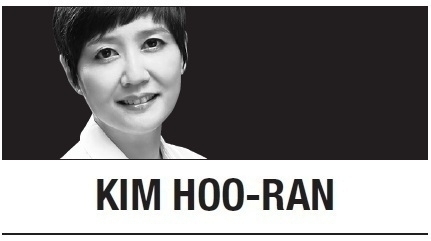
Last week, Minister of Culture, Sports and Tourism Hwang Hee announced two candidate sites in Seoul for a building to house a large collection of art donated by the family of the late Samsung Group Chairman Lee Kun-hee.
A site in central Seoul close to the National Museum of Modern and Contemporary Art, Korea and the grounds of the National Museum of Korea in Yongsan will be considered for the final selection, which will be announced by the end of the year, in consultation with a committee of experts and the relevant authorities.
In April, the Lee family announced the donation of some 23,000 works of art amassed by the late businessman who was a well-known art collector. The National Museum of Korea would receive 21,500 works of antique art, including state-designated national treasures and treasures. Some 1,600 works of modern and contemporary art by international and Korean artists would head to the National Museum of Modern and Contemporary Art. A number of works were donated to regional public and private museums with ties to the specific artists.
The unprecedented size, range and value of the donation had the art world in a frenzy, with different interest groups envisioning a different future for the collection.
It does not come as a surprise that the local governments who had campaigned to host the “Lee Kun-hee Institute” immediately protested the decision to locate what is being seen as a major new cultural attraction in the capital city.
In arguing that the envisioned art institute should be located in their cities, provincial governments cited ties to Lee and Samsung, however faint. One city claimed its right to host the institute on grounds that Lee Kun-hee had attended a school in the city for a number of years.
Why are the provincial governments so keen to host the proposed institute? The statements denouncing the Culture Ministry’s choice of Seoul as the location for the art institute mostly highlight opposition to the Seoul-centric arts scene. They argue that non-Seoul residents are culturally underserved and that hosting an art institution of such stature would provide people in the provinces the opportunity to enjoy and benefit from cultural experience.
I would not be wrong in suspecting that the provincial governments’ all-out efforts to secure the new arts institution has more to do with the possible economic benefits of such a project. Small provincial cities point to the Bilbao effect. Spain’s Bilbao, an industrial city, saw its revitalization with the opening of the Frank Gehry-designed Guggenheim Museum Bilbao in 1997, and the case is used to advance the argument that attracting a top-notch cultural institution can lead to a city’s revival.
In recent days, provincial cities have issued statements demanding that the selection process be started again from scratch. Some are calling for a transparent process, including bidding.
Before the government rushes into establishing a new art institution, however, a fundamental question needs to be answered: Is it needed?
By the Culture Ministry’s own admission, the two state-run museums have not had the time to properly examine and catalogue the collection. The actual significance of the collection and its value have yet to be determined.
Does the “Lee Kun-hee collection” merit a new institution, just so that the collection may be kept intact in its entirety? The Culture Ministry should not have rushed into announcing the building of a “Lee Kun-hee institution” without taking stock of the significance and value of the collection. Also, it might be worth remembering that the Lee family had said where the works should go. If keeping the collection intact had been the wish of the donors, they would not have designated the specific museums as recipients. Keeping the collection in one place, then, should not be a priority for the government, unless the significance and the value of the collection requires it.
At a press briefing announcing the two candidate sites, Hwang said that the new institution would cost some 100 billion won ($87.6 million) to build. That is 100 billion won in taxpayer money that would be spent to erect an art institution memorializing a private individual.
The Culture Ministry no doubt appreciates the unexpected gift. It could even be considered a windfall. Before the government opens its purse, however, the more fundamental question of the proposed institution’s raison d’etre should be addressed.
----------------------------------------------------------------------------------------------------
Kim Hoo-ran is the culture desk editor at The Korea Herald – Ed.By Kim Hoo-ran (
khooran@heraldcorp.com)








![[Today’s K-pop] Blackpink’s Jennie, Lisa invited to Coachella as solo acts](http://res.heraldm.com/phpwas/restmb_idxmake.php?idx=644&simg=/content/image/2024/11/21/20241121050099_0.jpg)